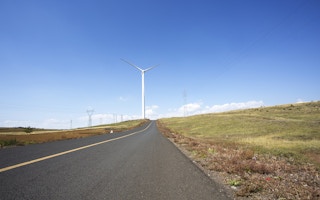I am excited about what lies ahead for green finance in China now that the Green Finance Committee was launched last week. The GFC comprises an elite group from China’s financial community including the top tier regulators, banks, asset managers, insurers and thought leaders. It marks a big step forward in China’s interest in green finance.
A month ago, China was shaken by a documentary called Under the Dome made by Chai Jing, a well-known journalist. With over 200 million viewers across in China in one week, the film has once again reminded everyone about the severity of air pollution in the country. Environmental challenges such as climate change, water scarcity, waste and pollution are threatening economic growth and social stability in China.
Green finance is a way out from under the ‘dome’. Under the leadership of China’s central bank, the People’s Bank of China (PBOC), the GFC will identify practical steps to achieve economic growth and environmental improvements through reform of China’s financial system.
At the GFC launch, PBOC deputy governor Pan Gongsheng said the bank and other key government organizations are taking serious measures to develop green finance. Governor Pan emphasized the role of China’s finance sector to direct the flow of capital away from sectors and businesses with high environmental impacts. The bank also encourages financial innovation that takes the environment into account and supports the growth of sectors that deliver the solutions to today’s environmental challenges. “The Green Finance Committee is addressing the needs of China’s societal development and it is a vital milestone of China’s journey in green finance. It also accelerates the country’s economic upgrade,” he said.
The launch meeting also saw Dr Ma Jun, chief economist of PBOC’s research bureau, elected as chair of the GFC. The committee’s members include the Industrial and Commerce Bank of China, Agricultural Bank of China, China Construction Bank, China Development Bank, the People’s Insurance Group of China, China Investment Corporation and China Galaxy Securities, along with 25 other financial institutions and organizations and another 54 non-executive members. In addition, the GFC also includes six international expert organizations: the International Finance Corporation, World Bank, UN Environment Programme, Principles of Responsible Investment, International Institute for Sustainable Development and Trucost.
“
Green finance is a way out from under the ‘dome’. Under the leadership of China’s central bank, the People’s Bank of China (PBOC), the GFC will identify practical steps to achieve economic growth and environmental improvements through reform of China’s financial system.
According to Ma Jun, the GFC will focus on by six areas, namely green finance services, responsible investment, fiscal and financial policy support, financial and legal infrastructure building, promotion of green sectors and awareness raising. Each area has a working group that will conduct research on international best practices, environmental externalities valuation, green bonds, environmental lender liability, financing models for the green sectors and information disclosure.
The GFC was the main outcome of the Green Finance Task Force, a group of 40 experts gathered together to review the issue. The task force’s final report, Establishing China’s Green Finance System, was published at the GFC’s launch. It highlights 14 recommendations including the need to measure and integrate environmental risks that are not currently reflected in market prices.
According to the report, China’s existing accounting system fails to effectively evaluate the environmental costs arising from infrastructure projects and industrial operations, leading to a serious underestimation of commercial and investment risks. With environment regulation increasing, effective accounting of environmental costs will be needed to support business decision making. If China can integrate environmental costs into an effective policy framework, investors, companies and consumers are more likely to make the right choice.
In Asia, the hidden costs of pollution, ecosystem depletion and health impacts from business activities are estimated to be over US$3.7 trillion, according to Trucost research for the UN-backed TEEB for Business Coalition. Carbon emissions from Chinese industry cost the global economy around US$765 billion a year in terms of reduced crop yields, flooding, disease, acidification and biodiversity loss. If companies had to pay these costs, it would wipe out their profits. Some of these costs are slowly being internalized by carbon trading schemes and disruptive events such as the severe droughts across China in 2010-11, which sparked profit warnings by some retailers due to cotton price volatility.
Through the GFC, Trucost’s role is to assist Chinese policymakers and financial institutions in valuing environmental impacts in financial terms, providing an overarching metric to assess risk and opportunity across operations, products, supply chains, and investments across asset classes.
Green finance is a glimmer of blue sky that shows the way to a more sustainable China.
Chaoni Huang is head of business development in Asia, Trucost. This post was originally published on the Trucost blog.











